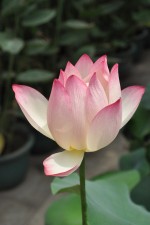Os aplicativos para identificar plantas são úteis para quem tem dúvidas sobre o nome ou a espécie de uma determinada planta. Além disso, também podem fornecer informações sobre o clima ideal, a melhor época para plantar e cuidar da planta.
Existem diversos aplicativos no mercado, mas como escolher o melhor para você? Neste artigo, vamos mostrar porque escolhemos um bom aplicativo para identificar plantas, de acordo com as suas necessidades.
A importância de identificar plantas
Quando se trata de identificar plantas, não há como negar a importância de um bom aplicativo. Afinal, este pode ser o diferencial entre encontrar o nome da planta desejada ou não.
Mas por que é tão importante identificar plantas? Basicamente, porque isso pode nos ajudar a evitar problemas futuros. Como por exemplo, você consegue escolher melhor as plantas para decorar sua casa que não trarão malefícios para toda sua família, principalmente as crianças e pets.
Além disso, saber o nome e tudo sobre a planta também pode ser útil para fins medicinais. Sendo assim, saberá se determinada planta possui propriedades curativas, se é útil no preparo de chás e infusões ou até mesmo emplastos. Dessa forma, um bom aplicativo de identificação de plantas certamente será muito útil para você!
Aplicativos para identificar plantas , o que são e como funcionam
Existem vários aplicativos para identificar plantas, mas como saber qual é o melhor para você? Primeiro, é importante entender o que esses aplicativos são e como funcionam.
Os aplicativos para identificar plantas são ferramentas que permitem ao usuário escanear ou tirar uma foto de uma planta e, em seguida, comparar esses dados com um banco de dados de plantas conhecidas.
Alguns desses aplicativos também oferecem recursos adicionais, como dicas sobre cuidados e jardinagem, além de outras informações úteis.
Existem dois tipos principais de aplicativos para identificar plantas: os que usam reconhecimento de imagem e os que usam um sistema baseado em textura. Os aplicativos que usam reconhecimento de imagem comparam as características visuais da planta escaneada ou fotografada com um banco de dados de imagens de plantas conhecidas.
Já os aplicativos que usam um sistema baseado em textura analisam as características táteis da planta, como sua forma, tamanho e textura, para fazer uma comparação com um banco de dados de texturas de plantas conhecidas.
Para escolher o melhor aplicativo para você, considere qual dos dois tipos funciona melhor para o seu estilo e nível de experiência. Se você é um iniciante na jardinagem ou tem dificuldade em distinguir as características visuais das plantas, pode preferir um aplicativo que use reconhecimento de imagem.
Já se você é um jardineiro mais experiente ou tem facilidade em identificar as características táteis das plantas, pode preferir um aplicativo que utilize um sistema baseado em textura.
Por que este app é o melhor?
O app da Plantnet é o melhor para identificar plantas porque ele oferece um reconhecimento de imagem automático e baseado em nuvem, além de um banco de dados com mais de 10.000 espécies vegetais. Você pode usar o aplicativo para tirar uma foto da planta que deseja identificar e enviá-la para o servidor do Plantnet.
Em seguida, o algoritmo do aplicativo comparará a imagem com as imagens em seu banco de dados e tentará encontrar a espécie mais próxima possível. O app também oferece uma função de busca manual, onde você pode procurar plantas pelo nome científico ou pelo nome comum. Rápido, fácil e divertido.
Em segundos você terá as respostas que procura na palma de sua mão. Basta ter acesso à internet. Demais não é mesmo? Além disso um aplicativo que está disponível para Android.
Conclusão
Esperamos que você tenha aproveitado a leitura, e compartilhado com os amigos. A importância de conhecer as plantas ao nosso redor é enorme, e com um simples aplicativo na palma da sua mão isso se torna possível. Obrigada por nos acompanhar e até a próxima!




